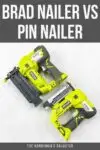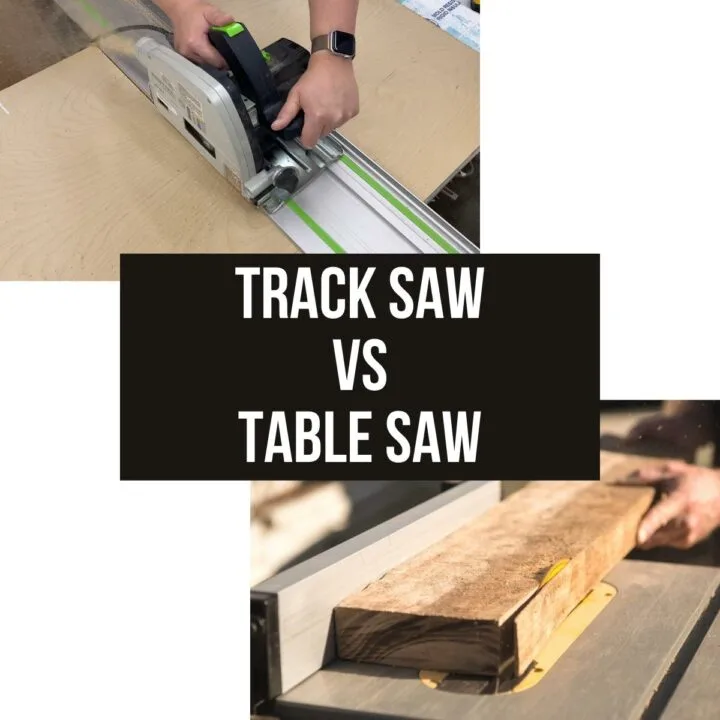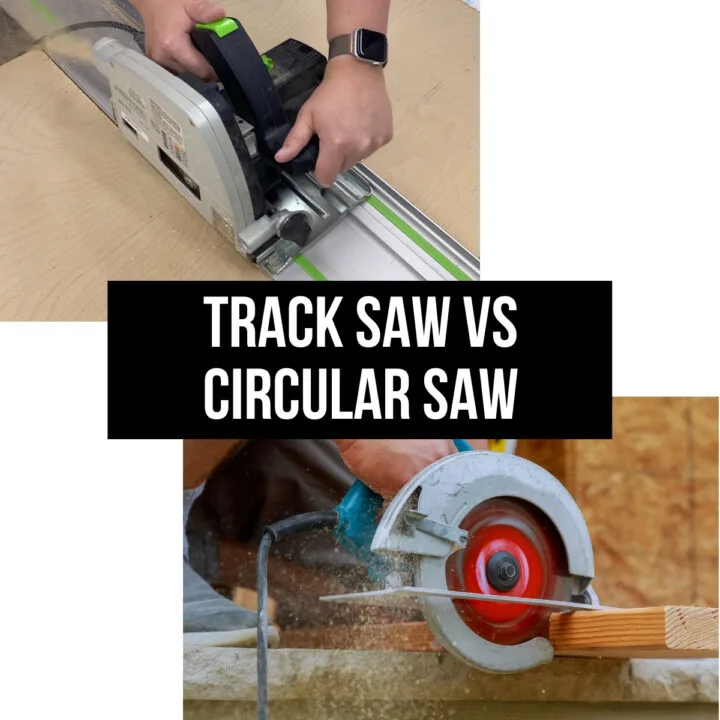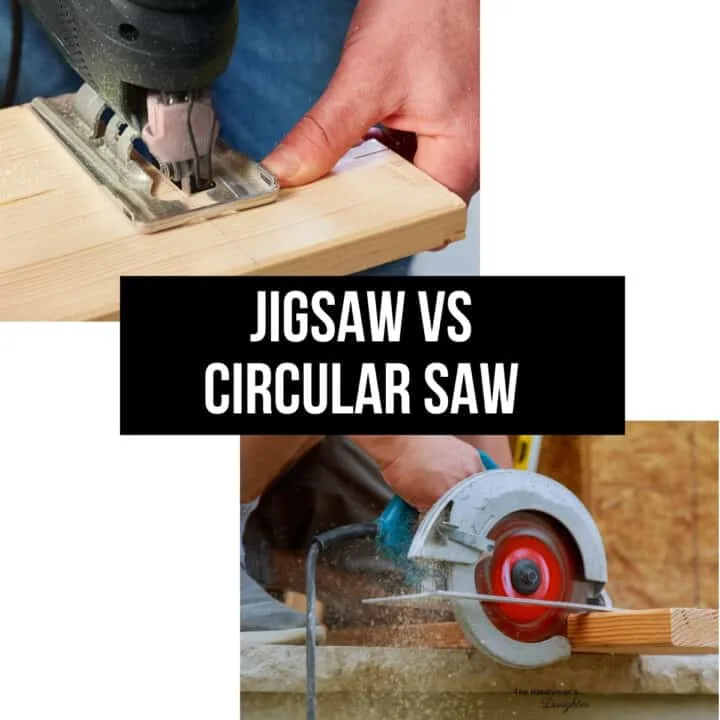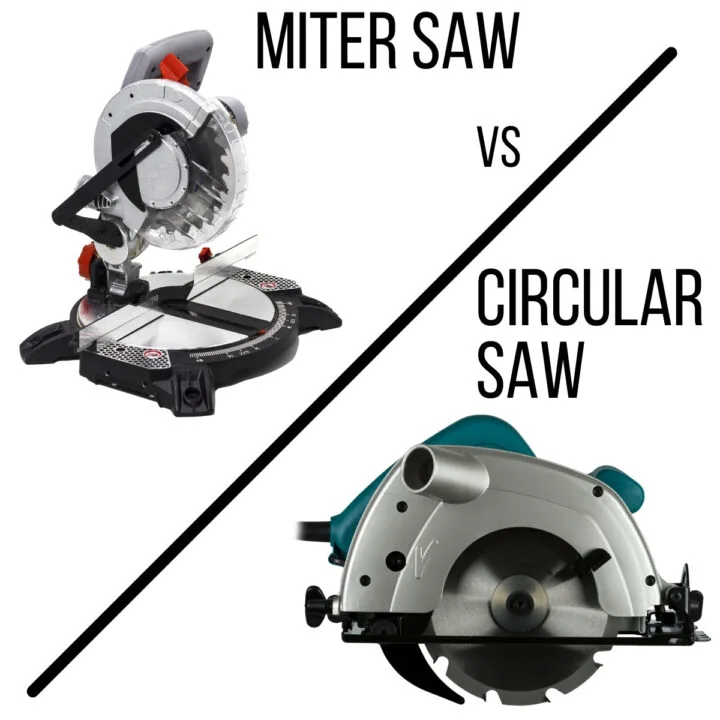Curious about the differences between a brad nailer vs pin nailer? Not sure which tool to grab for your next project? I'm here to help!
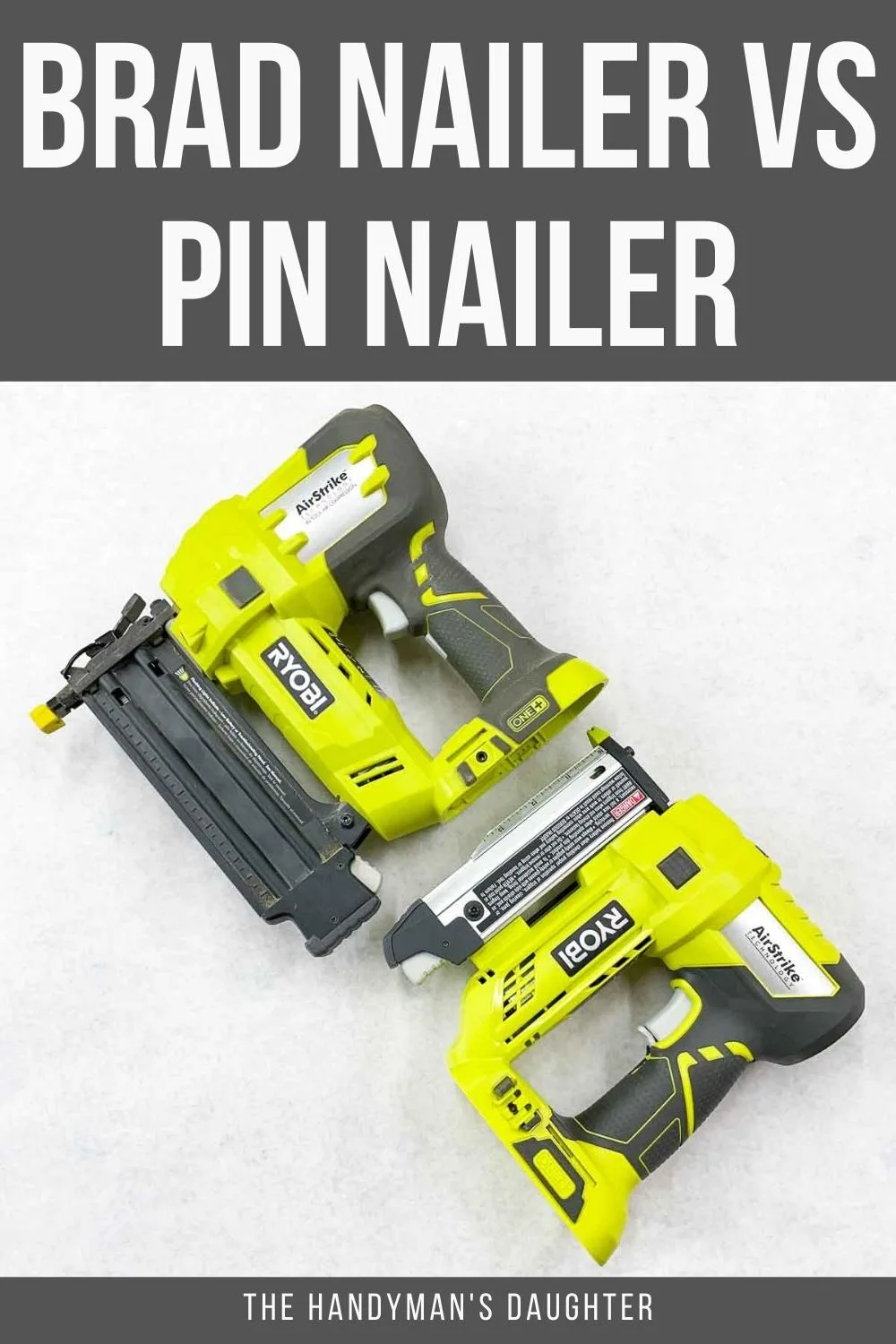
Brad nailers and pin nailers are both nail guns used for small to medium-sized projects. However, these tools are not interchangeable. Knowing the key differences between these nailers will make a big impact in your upcoming projects.
A brad nailer uses a larger, 18-gauge nail. Pin nailers use a smaller, 23-gauge headless nail. Pin nails leave a smaller hole but have less holding power than brad nails.
This post contains affiliate links for your convenience. Purchases made through these links may earn me a small commission at no additional cost to you. Please visit my disclosures page for more information.
What's the difference between a pin nailer and a brad nailer?
Let's start with a list of the major differences between these two nail guns. In general, it comes down to size and strength.
- Brad nailers fire 18 gauge nails.
- Pin nailers fire 23 gauge nails.
- Brad nailers will hold small woodworking projects together.
- Pin nailers are geared toward light finish work.
- Both nailers are commonly used with wood glue for a stronger hold.
- Both nailers are available in both pneumatic or battery powered styles.
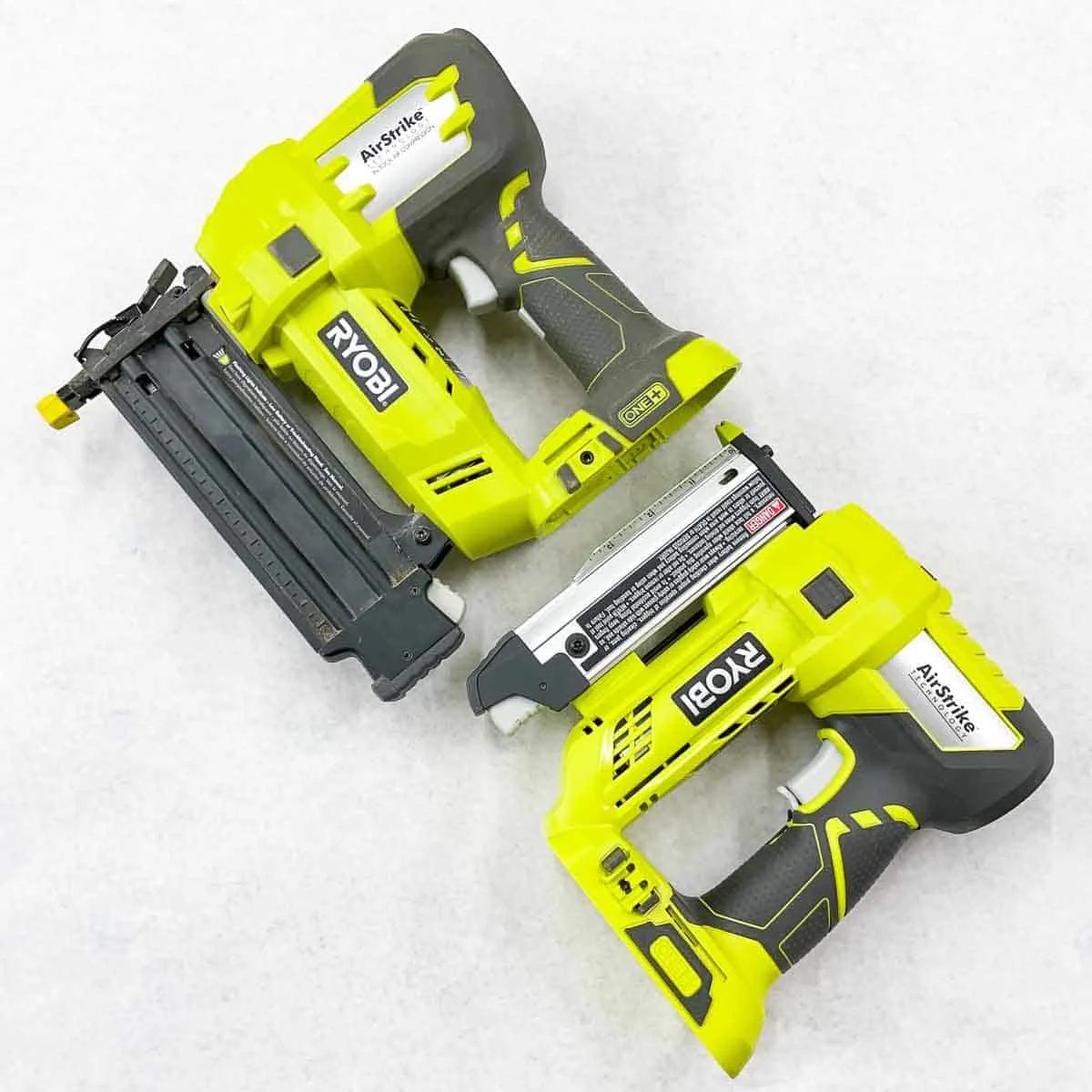
I love the Ryobi Airstrike nail guns, because they don't require a heavy, noisy air compressor. Just slap in a battery and get to work! I have both the 18 gauge brad nailer and the 23 gauge pin nailer, as well as the crown stapler, and I use them all the time!
As you can see, they look pretty similar, and I was always getting them mixed up. This simple nail gun organizer keeps them neatly labeled with a drawer to sort all the nails!
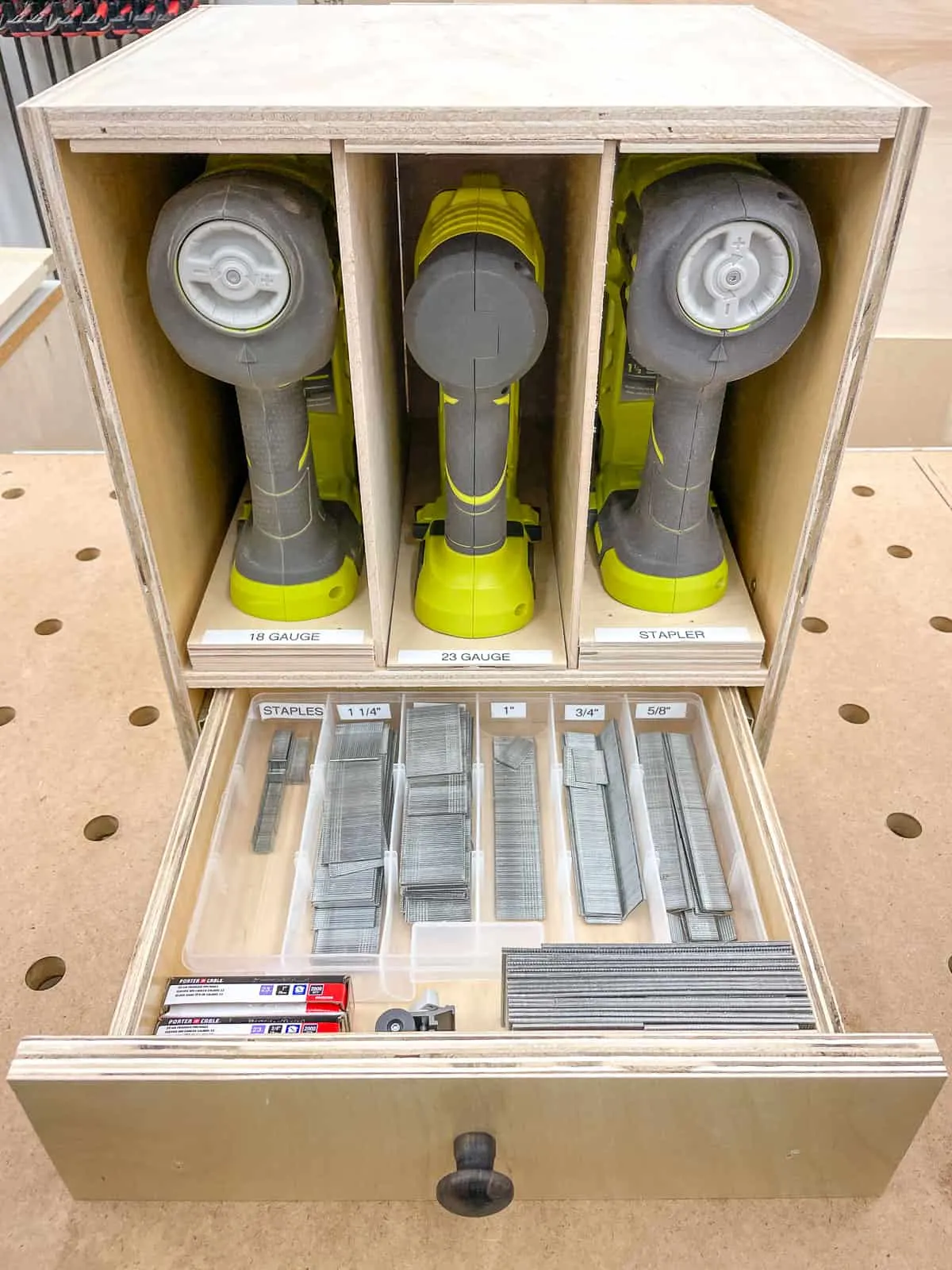
What is a pin nailer?
A pin nailer is a light-duty nail gun that drives 23 gauge nails. These headless nails are basically a straight wire.
What's the advantage of a headless nail?
Well, you can reduce the size of the nail hole while still maintaining some strength. The damage created by the nail is so small, you can barely see it!
Here's a side by side comparison of the holes left by a brad nailer and a pin nailer so you can see the difference. This is poplar wood, which is on the softer side of the hard wood species.
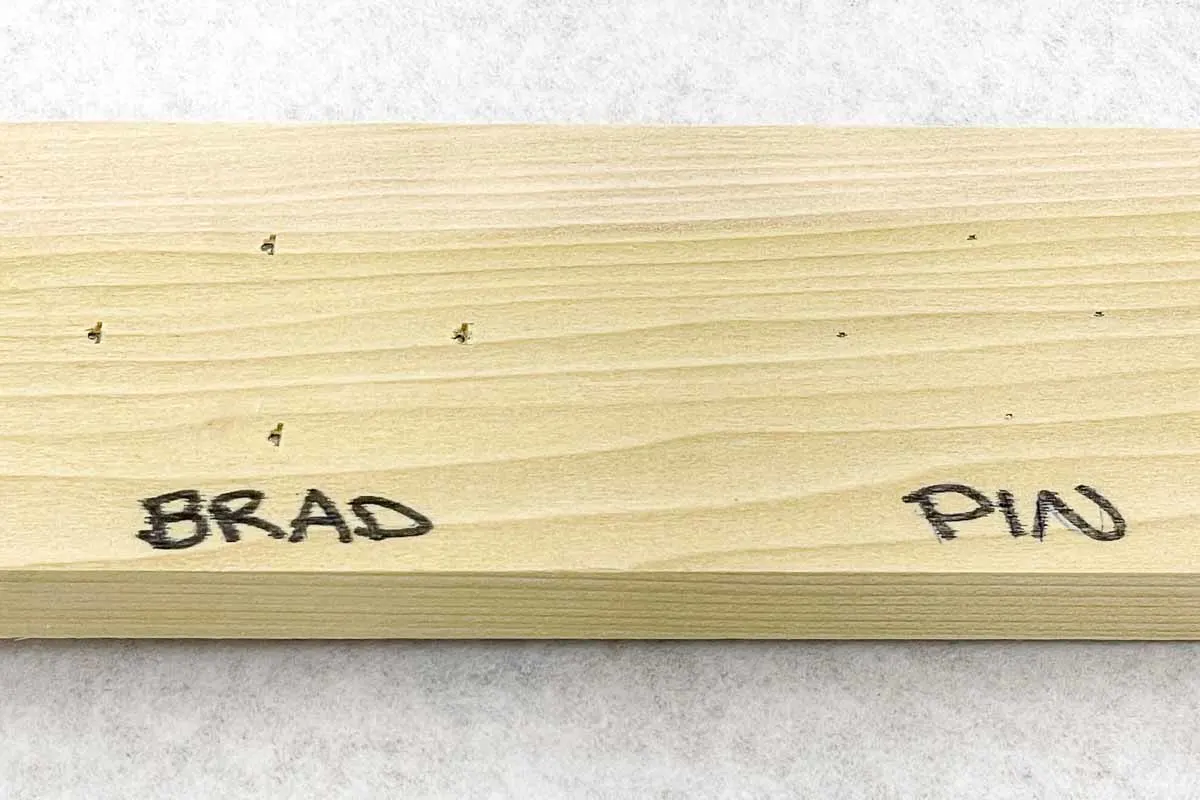
When should I use a pin nailer?
Use the pin nailer for smaller projects where you need minimal holding power and almost invisible nail holes. It's especially useful for attaching decorative trim, because it won't split the thin wood.
When you combine pin nails with wood glue, the nails act as a clamp so you don't need to worry about your boards slipping out of place. Apply the wood glue, tack in a couple of pin nails, and then use your clamps to hold everything together tightly while the glue dries.
You should also use a pin nailer when you want to use a natural finish on your project. Wood filler can leave obvious discoloration, especially when combined with wood stain. The hole left by the pin nail is so small, you can just sand and apply finish to make it disappear!
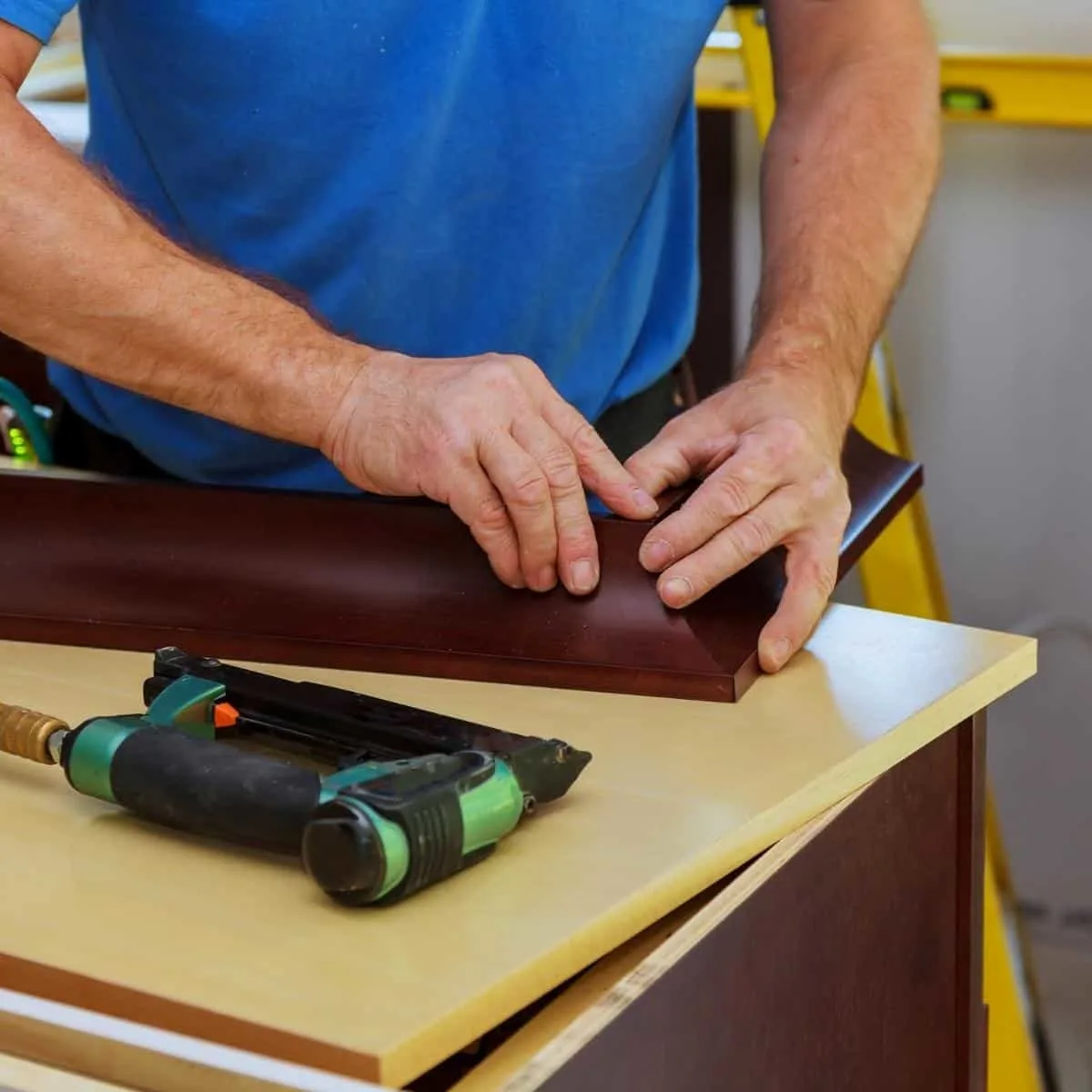
How do I use a pin nailer?
Use the pin nailer with care, just like any other larger nail gun. Don't let your guard down just because this is a smaller tool.
- Safety: Wear safety glasses and hearing protection. Also, beware of your fingers and hands - you don't want a misfire to strike your hand.
- Settings: Double check your PSI if you're using a pneumatic nailer. Usually, around 80-90 PSI is sufficient. However, be sure to double-check your manual.
- Apply glue: If you're using wood glue, apply an appropriate amount to the joining surfaces.
- Fire pin nails: Squeeze the trigger while applying light pressure to the project. Don't pull away too quickly.
- Check: Look to confirm the pins nails are firing properly. They shouldn't stick out from the surface, and they shouldn't be so deep that they go all the way through the top piece.
Here's a great video on how to use a pin nailer if you want a quick overview of the process.
Frequently Asked Questions about pin nailers
Should I get a pin nailer?
If you're looking for your first nail gun, you're probably better off getting a brad nailer or finish nailer. Those tools are much more versatile and will be used more frequently. I didn't have a pin nailer for many years, and only bought one recently for an upcoming project. But if you plan to do a lot of intricate trim details, a pin nailer is the way to go!
What's the difference between a pin nailer and finish nailer?
The main difference between a pin nailer and a finish nailer is the size of the nail. Finish nailers fire larger, 15-16 gauge nails. The larger nails have real holding power, and you can use them on a myriad of projects. On the other hand, the pin nailer fires small, headless, 23 gauge nails that aren't strong enough to use on their own.
Can I use a pin nailer for baseboards?
Pin nails likely won't give you the holding power you need for a baseboard. When installing baseboards, you may want to reach for your brad nailer - the 18 gauge nails will pull the baseboard into place without leaving a huge hole to patch.
What is a brad nailer?
Brad nailers are nail guns that fire 18-gauge brad nails. Brad nailers come in several styles, including pneumatic, gas, and battery-powered.
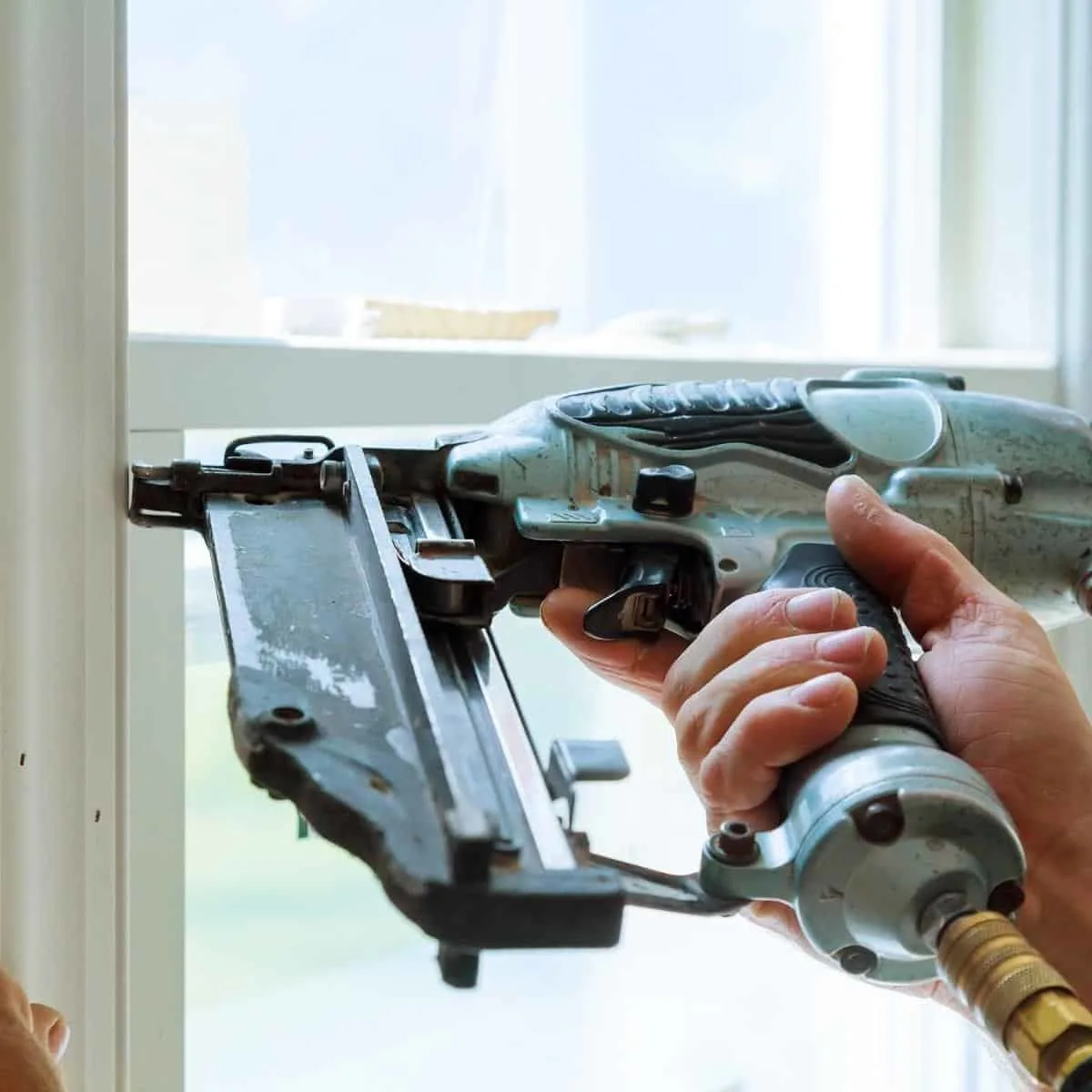
Brad nailers are great for medium to small projects. 18-gauge nails are not huge, but they offer more holding power than pin nails. Though it's smart to use the brad nailer with wood glue, the brad nails themselves will give you some holding power for non-structural projects.
When should I use a brad nailer?
Brad nailers have a wide range of applications. These tools work for DIY projects, molding, window trim, and more. The brad nailer is so useful that I included it in my list of best DIY tools.
The brad nailer bridges the gap between the pin and the finish nailer. Check out this article for an in-depth look at the difference between a brad nailer and a finish nailer.
Brad nails will provide greater holding power than the pin nailer, with only a slightly larger hole. It's a great tool for attaching baseboards and window trim, and for assembling woodworking projects.
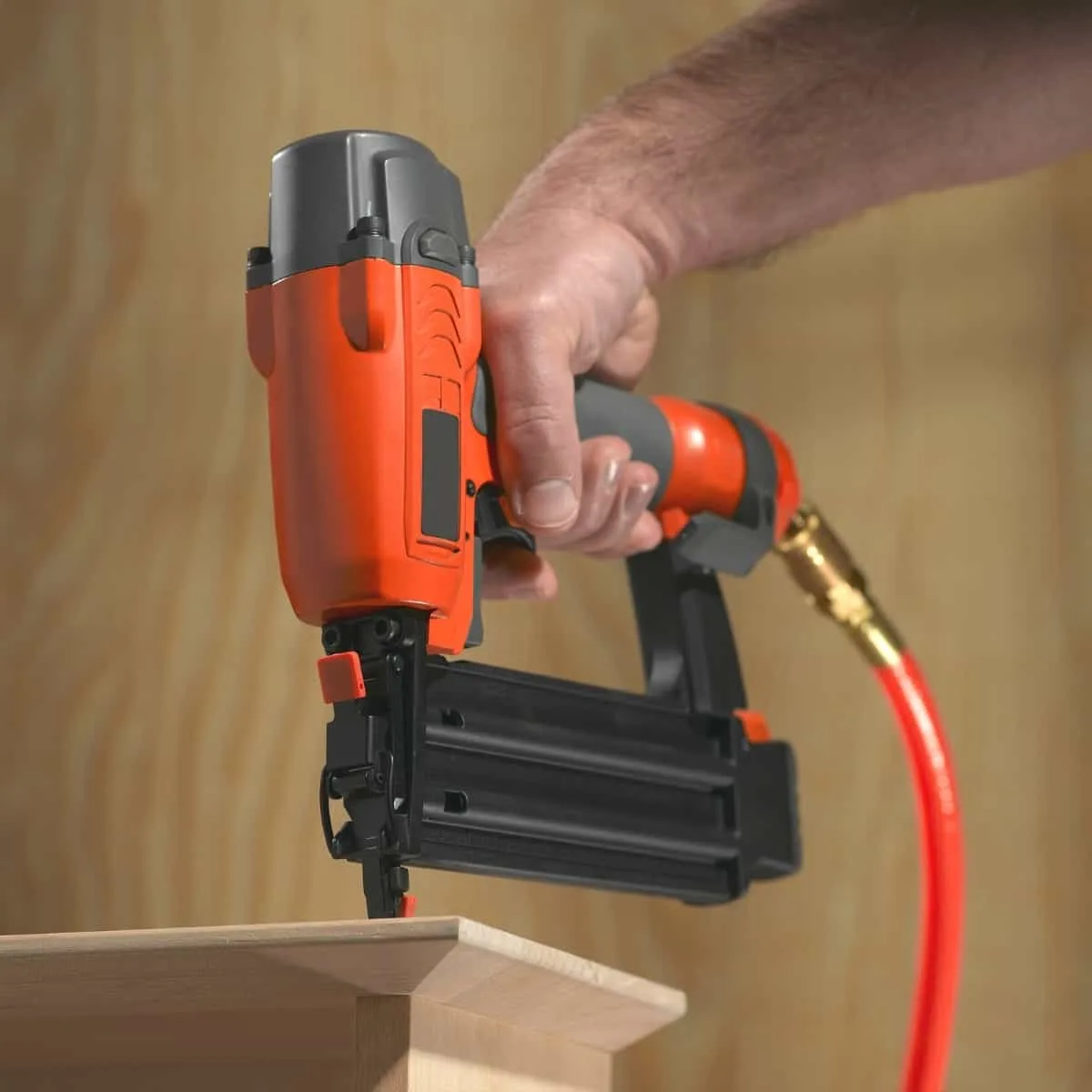
How do I use a brad nailer?
Operating a brad nailer is similar to operating any other nail gun. Remember to consult your manual for more details as every nailer has slightly different components.
- Safety: Wear your safety glasses. The only time you'll regret not wearing safety glasses is when something punctures your eye - and then it's too late! Also, be aware of your hand position when holding pieces together.
- Settings: Often, a brad nailer will have pressure and depth settings. You don't want your nails protruding from the board, but you also don't want the nail to blast completely through.
- Gun Position: Brad nails have a spear point that penetrates the wood. However, this two-sided point can cause the nail to curve when launched into the wood. For this reason, hold the nail gun perpendicular to the board - this way, if the nail does curve, it curves into the board, not your hand!
- Fire: Engage the nose of the nail gun and fire your first nail. Before firing into your project, drive several nails into some scrap, ensuring everything is firing correctly.
This video goes over some helpful tips for getting the best results with a brad nailer.
Frequently Asked Questions about brad nailers
What gauge nail gun should I buy?
It really depends on what you plan to build. The brad nailer offers a widest range of versatility. However, you'll need a larger nail gun for structural tasks.
Will brad nails hold drywall?
Brad nails won't hold drywall. You're much better off using drywall screws that are meant for the task.
Can you use a hammer for brad nails?
Brad nails are relatively thin and you can easily bend them with their hands. For this reason, you should only use them with a nail gun. However, if you don't have a brad nailer, you can certainly buy small gauge nails designed for hammers.

